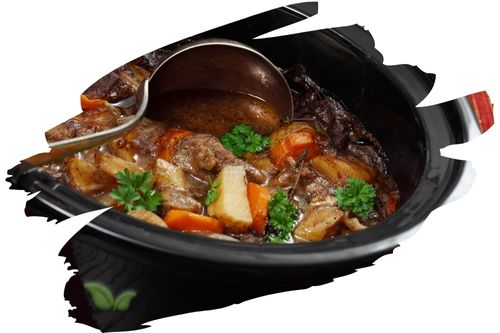
Introduction
Spices and condiments have the power to transform ordinary dishes into extraordinary culinary experiences. Horseradish and Wasabi are two such ingredients that bring the heat and excitement to a variety of cuisines. Let's explore their unique qualities and how they can spice up your meals.
Horseradish vs. Wasabi
Horseradish: The Bold and Pungent Root
Horseradish, scientifically known as Armoracia rusticana, is a root vegetable with a bold, spicy flavor that clears the sinuses and leaves a lasting impression. It is commonly grated and used as a condiment or ingredient in various dishes. Here's what sets Horseradish apart:
- Flavor Profile: Pungent, sharp, and sinus-clearing, with a slightly sweet undertone.
- Culinary Uses: Often served as a condiment for roast beef, seafood, and sandwiches. It's also a key ingredient in cocktail sauce and horseradish mustard.
Horseradish's bold and assertive flavor makes it a favorite choice for those who crave a spicy kick in their dishes.
Wasabi: The Japanese Heat
Wasabi, scientifically known as Eutrema japonicum, is a Japanese plant known for its intense and sinus-clearing heat. It is most commonly recognized as a green paste served with sushi and sashimi. Here's a brief overview of Wasabi:
- Flavor Profile: Potent, sharp, and eye-watering with a grassy, herbal note.
- Culinary Uses: Traditionally served with sushi and sashimi, Wasabi adds a fiery kick to Japanese cuisine. It's also used in various sauces and dressings.
Wasabi's distinctive heat and herbal notes make it an iconic condiment in Japanese cuisine, elevating the flavors of sushi and other dishes.
Cooking with Horseradish and Wasabi
Now that we've distinguished between Horseradish and Wasabi, let's explore how to use them to add a spicy kick to your culinary creations:
Horseradish: Bold and Zesty
1. Roast Beef Perfection
Pair roast beef with a zesty horseradish sauce for a mouthwatering combination of rich meat and spicy condiment.
2. Spicy Seafood Sauce
Create a spicy seafood sauce by mixing horseradish with ketchup, lemon juice, and Worcestershire sauce. It's perfect for shrimp cocktail and crab cakes.
3. Flavorful Dressings
Add grated horseradish to creamy dressings for salads or coleslaw to give them an extra layer of flavor and heat.
Wasabi: Japanese Fire
1. Sushi and Sashimi
Serve Wasabi alongside sushi and sashimi to enhance the flavors of fresh seafood while providing an invigorating heat.
2. Wasabi Mayonnaise
Whisk Wasabi into mayonnaise to create a spicy and creamy condiment that's perfect for sushi rolls and sandwiches.
3. Dipping Delight
Mix Wasabi with soy sauce to create a fiery dipping sauce for dumplings, tempura, and other Japanese dishes.
FAQs
Can I substitute Horseradish for Wasabi and vice versa?
While both Horseradish and Wasabi provide spicy heat, their flavors and heat levels are distinct. Substituting one for the other may alter the taste of your dish significantly.
Are there different varieties of Wasabi?
True Wasabi is often hard to find outside of Japan and is typically replaced with a mixture of horseradish, mustard, and green food coloring. Authentic Wasabi has a more nuanced flavor.
Can I grow Horseradish or Wasabi at home?
Yes, both Horseradish and Wasabi can be grown at home under specific conditions. However, they have specific growth requirements and may not thrive in all climates.
What are some famous dishes that feature Horseradish or Wasabi?
Horseradish is known for its pairing with roast beef, while Wasabi is famous for its role in Japanese sushi and sashimi.
How can I store Horseradish and Wasabi for extended freshness?
Store prepared Horseradish and Wasabi in airtight containers in the refrigerator to maintain their freshness and pungency.
Can I adjust the level of spiciness with Horseradish and Wasabi?
Yes, you can control the spiciness by adjusting the amount of Horseradish or Wasabi you use in your recipes. Start with a small amount and add more to taste.
Conclusion
Horseradish and Wasabi are two spicy condiments that add excitement to dishes in their own unique ways. Whether you prefer the bold and pungent punch of Horseradish or the eye-watering heat of Wasabi, these condiments are sure to add a spicy kick to your culinary creations.
Alert: While spices can have many beneficial properties for health, using them for medical purposes should be done under the guidance and supervision of a healthcare professional or specialist. Some spices may interact with medications or cause adverse reactions in certain individuals, and it is important to use them safely and appropriately. If you are considering using spices for a medical condition, it is important to consult with a healthcare professional before doing so.




















































